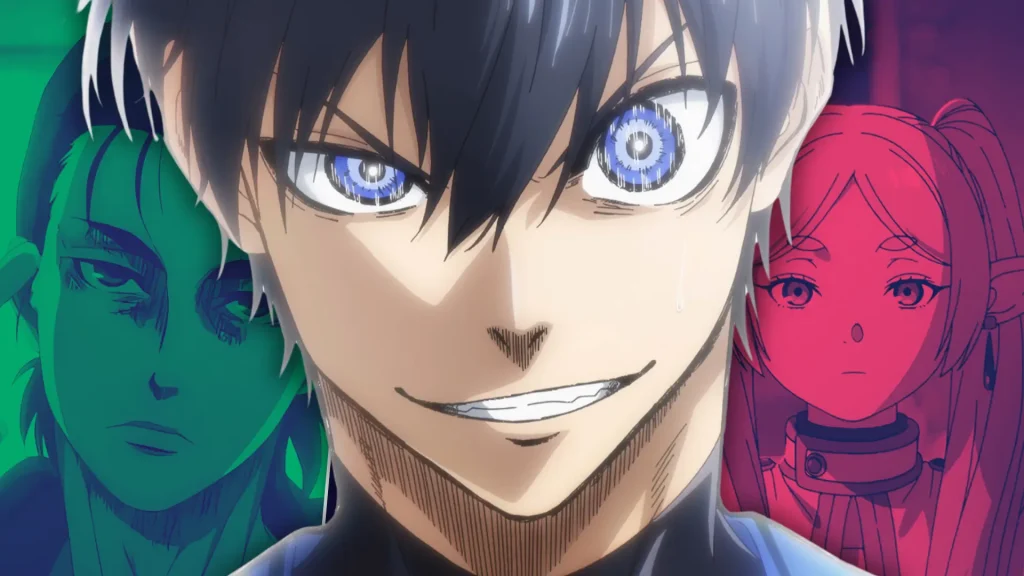This article contains spoilers for Jujutsu Kaisen manga.
In the world of anime and manga, few things rile fans up more than the fate of a beloved character. But what happens when a creator unapologetically kills off the face of their series, and their biggest rival couldn’t bring himself to do the same? That’s the wild contrast between Jujutsu Kaisen’s Gege Akutami and Attack on Titan’s Hajime Isayama.

Both creators are known for writing brutal, emotionally heavy stories that aren’t afraid to make fans suffer. But only one was willing to cross a line the other stepped back from at the last minute. Let’s break down how Jujutsu Kaisen made the ultimate move with Satoru Gojo, and how Attack on Titan pulled its punches with Levi Ackerman.
Gojo’s Shocking Death Changed Everything in Jujutsu Kaisen
When Chapter 236 of Jujutsu Kaisen dropped, fans weren’t ready. It was the highly anticipated fight between Gojo and Sukuna, a battle hyped for months. But no one expected it to end like that.
After being built up as the strongest sorcerer, the king of cool, and the safety net for every other character, Gojo was gone in an instant,killed off-panel in a blink-and-you-miss-it moment. The narration didn’t soften the blow either: “Satoru Gojo has fallen to Sukuna. End of the battle of the strongest.”
This wasn’t just any death. Gojo had consistently dominated popularity polls, once raking in 113,000 votes, more than 42% of the total. He was the face of the series. And yet, Akutami axed him with zero hesitation. No dramatic final stand. No redemption arc. Just a clean cut, and the fanbase exploded.
Fans were furious, devastated, and many felt betrayed. Threats and angry comments flooded online spaces. But Akutami didn’t flinch. In fact, according to some reports, he liked the chaos. This was a move he had planned, not for shock value, but to elevate the stakes and reset the balance of the series.

Gojo’s death wasn’t meaningless, it pushed the narrative forward in a major way. It made Sukuna even more terrifying, left the younger generation of sorcerers with no safety net, and forced them to evolve. And in a strange twist, Gojo himself seemed okay with it. In a scene where he reflects in the afterlife, he’s smiling, content with what he left behind.
Akutami even went on record saying Gojo was “insufferable” and “had it coming,” which only added fuel to the fire. But there’s no denying the move had impact. It made Jujutsu Kaisen’s final arc feel unpredictable and dangerous in a way few shonen arcs do.
Isayama Wanted to Kill Levi, But Didn’t
Meanwhile, over in Attack on Titan, Hajime Isayama had the perfect moment to deliver a fatal blow to another beloved character: Levi Ackerman. During the War for Paradis arc, Levi takes a thunder spear blast to the face at point-blank range. His body is shredded, he loses fingers, and he’s left in a coma. It looked like the end.
But then… it wasn’t.

Despite Attack on Titan’s reputation for mercilessly killing fan-favorite characters, Isayama chose to let Levi live. And what’s wild is, he almost didn’t.
According to his editor Shintaro Kawakubo, Isayama originally planned for Levi to die a completely meaningless death. No heroic last stand, no epic sendoff, just a random, brutal end to show the cruelty of war. “Levi’s death wouldn’t change the ending,” Isayama reportedly said at the time.
Kawakubo stepped in hard, arguing that fans would feel betrayed if Levi died like that. He pushed back on the idea that a meaningless death would serve the story. And ultimately, Isayama listened. Levi survived, completed his mission by killing Zeke, and got the closure fans desperately wanted. Even in a wheelchair, he stood as a symbol of resilience in the epilogue.
Two Creators. Two Icons. Two Very Different Choices.
What we’re seeing here is a stark difference in creative philosophy.
Gege Akutami told fans to brace themselves for a bittersweet ending from the beginning, and he wasn’t bluffing. Killing Gojo wasn’t just a plot twist, it was a statement: No one is safe, and the story comes first. His detachment from fan emotions isn’t carelessness; it’s a commitment to storytelling on his own terms.
Hajime Isayama, for all the brutality in Attack on Titan, showed a surprising softness when it came to Levi. He was ready to go full nihilist, but his editor reminded him of the emotional weight behind Levi’s journey. And Isayama listened. Levi’s survival didn’t just offer fans a sliver of hope, it gave the story one of its most satisfying arcs of closure.
Akutami vs. Isayama: Who Was Right?
There’s no clear “right” answer here. Akutami’s choice was bold and brutal, but narratively effective. Isayama’s choice was empathetic and fan-conscious, yet still emotionally resonant. Both stories are better for the decisions their creators made, even if fans are still debating which route hits harder.
But one thing’s for sure: Gege Akutami did something Hajime Isayama couldn’t. He killed the golden goose, and watched the fandom burn. And the crazy part? Jujutsu Kaisen is still thriving. Because sometimes, the boldest move is the one that hurts the most.

